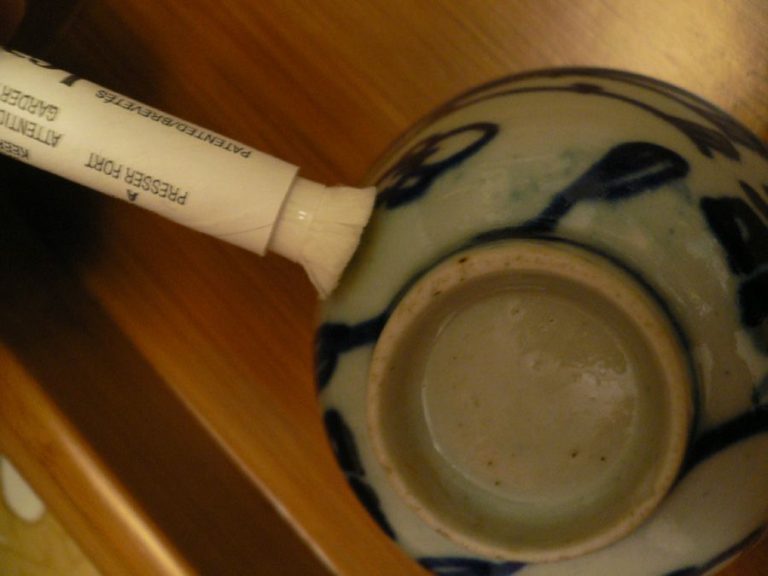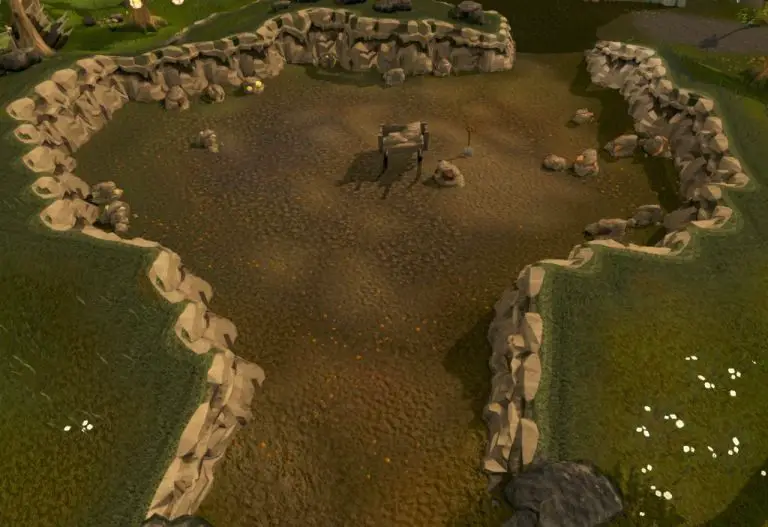How Is French Green Clay Made?
What is French Green Clay?
French green clay, also known as French green illite clay, is a unique type of mineral clay that has properties making it ideal for use in skincare and cosmetics. The greenish hue and composition give French green clay some distinctive characteristics compared to other clays.
French green clay is composed primarily of montmorillonite and illite, two forms of mineral clay. The clay gets its characteristic green color from the presence of iron oxides and decomposed plant matter. The montmorillonite in French green clay gives it absorptive properties, allowing it to draw out impurities from the skin. The illite provides minerals that nourish and hydrate the skin.
Unlike other clays that may dry out the skin, French green clay is known for its ability to cleanse and exfoliate while still leaving skin soft and hydrated. When used on the skin, the clay is able to penetrate deep into pores to remove excess sebum, toxins, pollutants, and other impurities. This makes French green clay an effective treatment for acne, oily skin, and other skincare concerns. The absorbent nature of the clay also makes it useful for reducing inflammation and soothing irritated skin.
In addition to skincare, French green clay is also prized in hair care and cosmetics. It can be used in masks, cleansers, and shampoos to purify and nourish. Many natural beauty and bath products contain French green clay for its ability to cleanse while adding beneficial minerals.
Where Does it Come From?
French green clay primarily comes from specific regions in central and southern France. The main sources are deposits found in areas like the famous clay region of the Limousin around the city of Limoges, or in Provence around cities like Apt, Gargas, and Rustrel.
These regions contain deposits of very pure, high-quality kaolinite clay that occur naturally due to the breakdown of igneous rock like granite over geological timescales. The kaolinite deposits settled in former lake beds and other alluvial deposits, resulting in especially rich sources of green clay.
Southern France in particular provides an ideal climate and environment for the formation of high-quality kaolinite deposits, with the right balance of heat, rainfall, and natural chemical weathering processes. Additionally, traditional pottery-making and clay mining in these regions helped identify and locate the best sources of clay historically.
How is it Mined?
French green clay is mined from open-pit mines, which are large open spaces dug into the earth to extract the clay deposits underneath. The mining process begins by stripping away the topsoil and overburden (rock, soil and ecosystem) above the clay using bulldozers and excavators. This exposes the clay seam underneath, which can range from just a few feet to over 50 feet thick.
Once exposed, the clay is extracted by digging into the seam with excavators and loaders. The clay is loosened and loaded into large dump trucks, which haul it to a processing facility. Extracting the clay requires coordination between the excavator operators digging into the seam and the truck drivers hauling the material away.
Safety is paramount when mining French green clay. Workers wear hard hats, steel-toed boots and other protective equipment. The equipment itself is specialized for mining and maintained meticulously to prevent accidents. Care is taken to stabilize walls and faces of the pit to avoid collapse. Dust control measures like water sprays are used to improve air quality for workers. Regular safety inspections and training help create a culture of safety.
Washing and Weathering
Once the clay has been mined, it goes through an extensive washing process. The clay is mixed with water in large vats which allows any heavy non-clay particles and impurities to separate and sink to the bottom. The now liquefied clay is then pumped into settling ponds.
Here, the clay is allowed to settle for several weeks. This allows any remaining fine particles and impurities to slowly precipitate out. The clear clay water from the top of the ponds is then pumped out, leaving the cleansed clay behind. This washing process removes all soluble salts and impartialities, leaving pure and pristine French green clay.
After washing, the clay undergoes a weathering process. It is transported to open air drying fields, where it is exposed to the sun, rain, wind and other elements for up to several months. This weathering helps oxidize and balance the clay while removing any lingering odors or tastes. It also allows any remaining moisture to fully evaporate under the warmth of the Provençal sun.
The alternating cycles of sun exposure and rainfall purify and reinvigorate the clay. This natural weathering process is crucial for activating the clay and enhancing its therapeutic properties and health benefits. The patience required for proper weathering is one reason why authentic French green clay commands a premium price. The resulting clay has a balanced pH, smooth texture and vital mineral content.
Drying and Grinding
Once the clay has been thoroughly washed and weathered, it undergoes a careful drying process. Traditionally, French green clay was dried slowly under the sun over a period of several weeks. This allowed any remaining moisture to evaporate at a gradual pace to prevent cracking or damage to the clay’s natural minerals and nutrients.
Today, while some facilities still use solar drying methods, large commercial operations often rely on temperature-controlled kilns to efficiently dry mass quantities of clay. The clay is spread out on trays or racks, then placed inside the kilns and slowly dried at temperatures between 90-120°F. This dries the clay thoroughly while retaining its delicate properties and signature green coloring.
After drying comes the grinding process, which turns the hardened clay into a fine, velvety smooth powder. Industrial grinders mill the clay down to a uniform particle size measured in microns. The resulting powder has a rich, olive green hue and a creamy consistency ideal for cosmetic and skin care applications. Proper grinding ensures the clay has a consistent texture and maintains its purity without damage to the natural minerals present in the clay.
Color and Impurities
The natural green color of French green clay comes from the chemical composition of the clay in its raw form. The green hue is derived from decomposed plant matter and iron oxide found within the clay deposits. While French clays can range in color from off-white to olive green or blue-grey, the green variety is most prized for cosmetic applications.
After mining, impurities like sand and grit need to be thoroughly washed away through a refinement process. The clay is mixed with water into a slurry and passed through a series of filtration systems to remove larger particles. It is then treated with chemical flocculants which bind to the remaining fine impurities and allow them to settle out of suspension.
For the highest grade cosmetic clays, additional steps may be taken to achieve an optimal level of purity and particle fineness. Some manufacturers will centrifuge the clay slurry to separate impurities by density. The clay can also be milled into an ultra-fine powder to create a smoother texture.
This comprehensive refining process removes excess minerals and other substances, leaving behind only the pure, cosmetic-grade French green clay desired for skincare and beauty products.
Quality Control
Ensuring the purity and safety of French green clay is a top priority. All reputable clay producers have rigorous quality control standards to test for contaminants and toxins. The clay is screened for heavy metals like lead, arsenic, and mercury through laboratory testing. Microbiological testing is also conducted to check for bacteria like E. coli and salmonella.
The mineral content and pH balance of the clay is carefully analyzed as well. High-grade French green clay typically has a pH between 7-9, indicating a neutral to mildly alkaline pH. The clay is checked to ensure it contains the expected levels of minerals like silica, magnesium, calcium, potassium, iron, and aluminum.
To provide further assurances to consumers, many French green clay producers adhere to cosmetic industry standards and secure certifications. Common certifications include Ecocert, Nature, and the ISO 22716 Good Manufacturing Practices standard. These certifications require third-party auditing and verification that strict quality control protocols are being followed.
Packaging and Distribution
Once the French green clay powder has been processed, it is ready to be packaged for retail and distribution. The clay powder is carefully packed into smaller retail-sized packages, usually plastic jars or bags ranging from 2 ounces to 5 pounds. These small packages allow consumers to purchase the precise amount of green clay they need.
The packaged clay is then distributed through wholesale and retail networks across the globe. There are several major distributors that focus on shipping French green clay worldwide. They have partnerships with spice and cosmetic ingredient companies in North America, Europe, Asia, Australia and beyond. This allows the clay to reach consumers and manufacturers around the world.
Throughout the packaging and distribution process, steps are taken to maintain the freshness and integrity of the French green clay powder. It is kept in climate controlled warehouses to prevent moisture exposure. The small retail packages also help to minimize air exposure and keep the clay protected. Prompt shipping and inventory rotation helps ensure consumers receive recently packaged, fresh clay.
Pricing Factors
The cost of French green clay depends on several factors related to the mining, processing, and distribution of the material. Here are some of the key considerations that impact the pricing:
The location and depth of the clay deposits affect the cost and effort required for mining. Clay that is buried deeper or located in remote, difficult to access areas will be more expensive to extract. The size and scale of mining operations also impacts costs.
Processing the raw clay into a cosmetic-grade product suitable for skincare involves extensive effort. The clay must be carefully washed, weathered, dried, milled, and sifted to achieve the right consistency and purity. Larger processing facilities can benefit from economies of scale, while artisanal producers have higher labor costs.
Transportation and packaging expenses factor into the pricing as well. French green clay is often shipped worldwide, so international logistics and material costs are built into the price. Higher quality custom packaging versus bulk options also increase costs for consumers.
The overall rarity and quality of the clay drives pricing too. Very high purity green clays with ideal compositions command premium prices. Batch-to-batch variations in mineral content, textures, and colors also impact costs. In general, the finest French green clays are more scarce and therefore more expensive.
Environmental Considerations
The production of French green clay has become more eco-friendly over the years. Suppliers have implemented sustainability initiatives to reduce the environmental impact of clay mining and processing.
Modern mining techniques utilize equipment and processes designed to minimize land disruption. Reclamation efforts restore mined areas to their natural state. Some operations recycle water used in clay washing and implement conservation practices.
Many leading suppliers have obtained sustainability certifications for their operations. They aim to reduce energy consumption, carbon emissions, and waste throughout the production process. Some use renewable energy sources like solar power.
To reduce the carbon footprint associated with transportation, suppliers located closer to end markets are often prioritized. Some companies use low-emission vehicles for distribution. Packaging is designed to minimize waste.
By partnering with responsible producers, cosmetic brands can offer green clay products with a lower environmental impact. Consumers increasingly demand sustainably-sourced ingredients, so these efforts allow suppliers to meet market needs.





